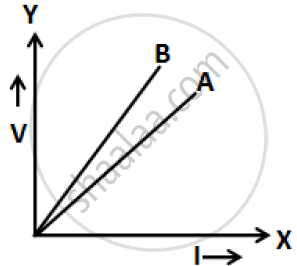Advertisements
Advertisements
प्रश्न
What possible values of resultant resistance one can get by combining two resistances, one of value 2 ohm and the other 6 ohm?
उत्तर
Connecting a 2 Ω and 6 Ω resistor in series combination:
`R=R_1+R_2`
R= 2Ω+6Ω=8Ω
Thus, we will get an 8 Ω resistor
Connecting a 2 Ω and 6 Ω resistor in parallel combination:
`1/R=1/R_1+1/R_2`
`1/R=1/2+1/6`
⇒`1/R=4/6`
⇒ `R=6/4 `Ω
Thus, we will get a 1.5 Ω resistor.
APPEARS IN
संबंधित प्रश्न
Find the expression for the resistors connected in series and write the two characteristics of it. (Draw figure).
Why is the series arrangement not used for domestic circuits?
The V-I graph for a series combination and for a parallel combination of two resistors is shown in the figure below. Which of the two A or B. represents the parallel combination? Give reasons for your answer.

Find the equivalent resistance between points A and B

Name the material which is used for making the heating element of an electric iron.
How does the resistance of a pure metal change if its temperature decreases?
How does the resistance of an alloy, vary with temperature?
Three resistors of 6Ω, 3Ω and 2Ω are connected together so that their total resistance is greater than 6Ω but less than 8Ω Draw a diagram to show this arrangement and calculate its total resistance.
In the circuit shown below, calculate the equivalent resistance between the points (i) A and B, (ii) C and D.
Two wires of the same length and area made of two materials of resistivity ρ1 and ρ2 are connected in series to a source of potential V. The equivalent resistivity for the same area is:
